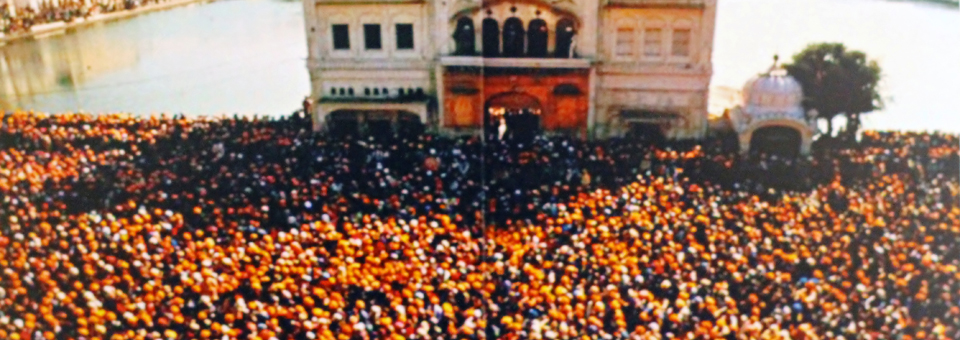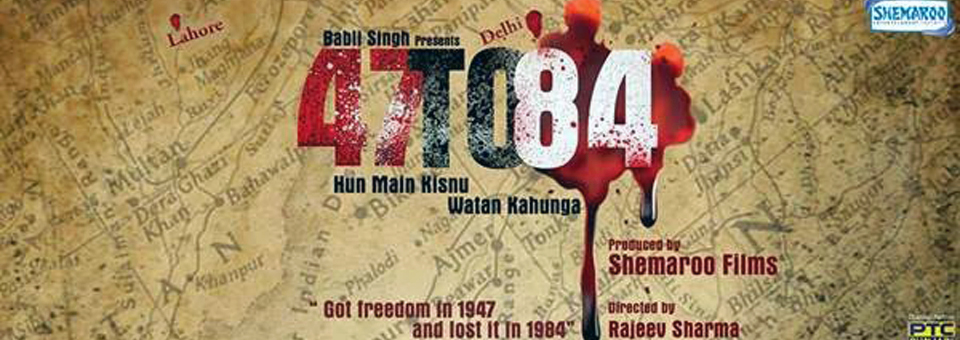When the month of Chet came around last year, murmurs of discontent were born anew from the fields of Punjab to the nations of the West; in the hundreds of thousands, Sikhs pledged orange. Sparked by the imminent execution of Balwant Singh Rajoana – a convicted conspirator in the 1995 assassination of then-Chief Minister of Punjab Beant Singh – there were vigils, rallies and darbars on a daily basis. For a brief moment it looked as though the Sikh World had awoken from the very un-Sikh-like slumber of the past two decades. But no sooner had the Hukumnama been read aloud to conclude the final Nagar Kirtan of the season than the movement was over. I wrote an article that summer trying to make sense for myself in a purposely public setting, just what had happened. I recall it was shared and liked on Facebook a few dozen times, favourited on Twitter; the irony of that will not be lost on anyone who read it. So a year on I am revisiting the issue, but with a new found sense of realisation and direction.
For a few short months last year, Sikhs of all shapes and sizes spoke out against injustices that blight the people of Punjab and Sikhs in particular across all India. Although the topic of conversation centred around the prominent case of one individual, it was repeatedly supplemented by the backdrop of wider abuses of the State including the attack on Sri Darbar Sahib, Amritsar in 1984. For those few short months it appeared that Sikhs across the World could no longer turn a blind eye to the ills of the society we had left behind when we migrated in search of a better life. But the summer months came and the ire vanished, even though the circumstances had not changed, they had just been prolonged. It is bizarre when you think about it: Balwant Singh Rajoana remains in prison and is still facing the death sentence, only now he resides in that in-glorious space somewhere between death and life-long incarceration. Nothing has in fact changed about Rajoana; he continues to speak with the courage that earnt him the admiration of so many and struck fear into the heart of those who have worked vigorously to control the State purely for their own interests. But we are no longer pledging orange, or if we are it is purely in name. So what changed for us? Was the movement merely a fad, a ‘Get Kony’ for this community of brown people?
I’d like to think it wasn’t a fad. Some undoubtedly got caught up in the moment, as they do whenever the cause-du-jour makes headlines, but on the whole I believe that most Sikhs who were pledging orange did so with a pure intent. It stands to reason when you see how much was achieved in just a matter of weeks: we, the people, stood arm in arm in all weather, lobbied politicians that we otherwise ignore, put aside petty differences and showed a glimmer of being the Sikhs we know we want to be. But that wasn’t enough, isn’t enough and will never be enough. Intentions are no substitute for actions; Sikhs should understand this better than anyone, seeing as it is fundamental to our way of life! We may have signed the petitions, travelled to our capital cities, and lit the candles, but essentially we were engaging in rituals akin to prayer, asking others to do something for us in a World that we all control. ‘What more could we do?‘ I hear you cry; and therein lies the problem: most Sikhs who took time out of their lives to show their support in both the real World and the online one, sadly did not take any time to discover for themselves what lay at the heart of this issue. And they are still none the wiser. Those that did, have a much better idea of what to do – they understand the problem and so can identify ways to try to resolve it.
I want to make it clear that I am not disparaging signing petitions, lighting candles or attending rallies, rather the manner in which many of us do so. They are emblematic of engagement which requires little effort and is usually based on our trust in another person who directs these activities. There is no one single solution, moreover the root-problem itself is multi-dimensional here and so greater input is required if we are to progress. As a Panth, we were almost at a starting point again for the first time in over 30 years when activity dissipated; a starting point that emerges with a question as I alluded to in my article last summer:
…the real story that we are being kept from hearing is why countless young men in Indian Punjab had been leaving their homes and loved ones for over a decade to openly rebel against the State. From within the Sikh community, reassured voices that appeared to chime in tune with the younger generation did not allow the cogs to turn and for these very real matters to be faced.
If you ask this question – why the likes of Rajoana had left his home and life behind to rebel (answers to which lie in Cynthia Mahmood’s ‘Fighting for Faith and Nation’ and Joyce Pettigrew’s ‘The Sikhs of the Punjab’) further questions flow one after the other. If the attack on Sri Darbar Sahib was to flush out militants, how did more than half of those leading the Dharam-Yudh morcha walk out alive? (Answers to which can be found in Ajmer Singh’s ‘ਵੀਹਵੀਂ ਸਦੀ ਦੀ ਸਿੱਖ ਰਾਜਨੀਤੀ’.) Why were the federal demands of the Anandpur Sahib Resolution not enacted and instead depicted as communalist? (Answers to which can be found in Dr Gurtej Singh’s ‘Chukravyuh’.) How was river water redirected from the Punjab at the same time that high-yield variety seeds were being introduced? (Answers to which can be found in Vandana Shiva’s ‘The Violence of the Green Revolution’.) These questions and the countless more that arise will lead to a better understanding of the issue. Long-term solutions will then follow. This is the path of a true Sikh – a student of the Guru who wants to grow and expand the state of their being through putting that which they learn into practice. This is the Sikh who will forever pledge orange for as the third Guru Nanak declared in Raag Basant, “Those who are imbued with Truth, are forever in the bloom of spring.“






